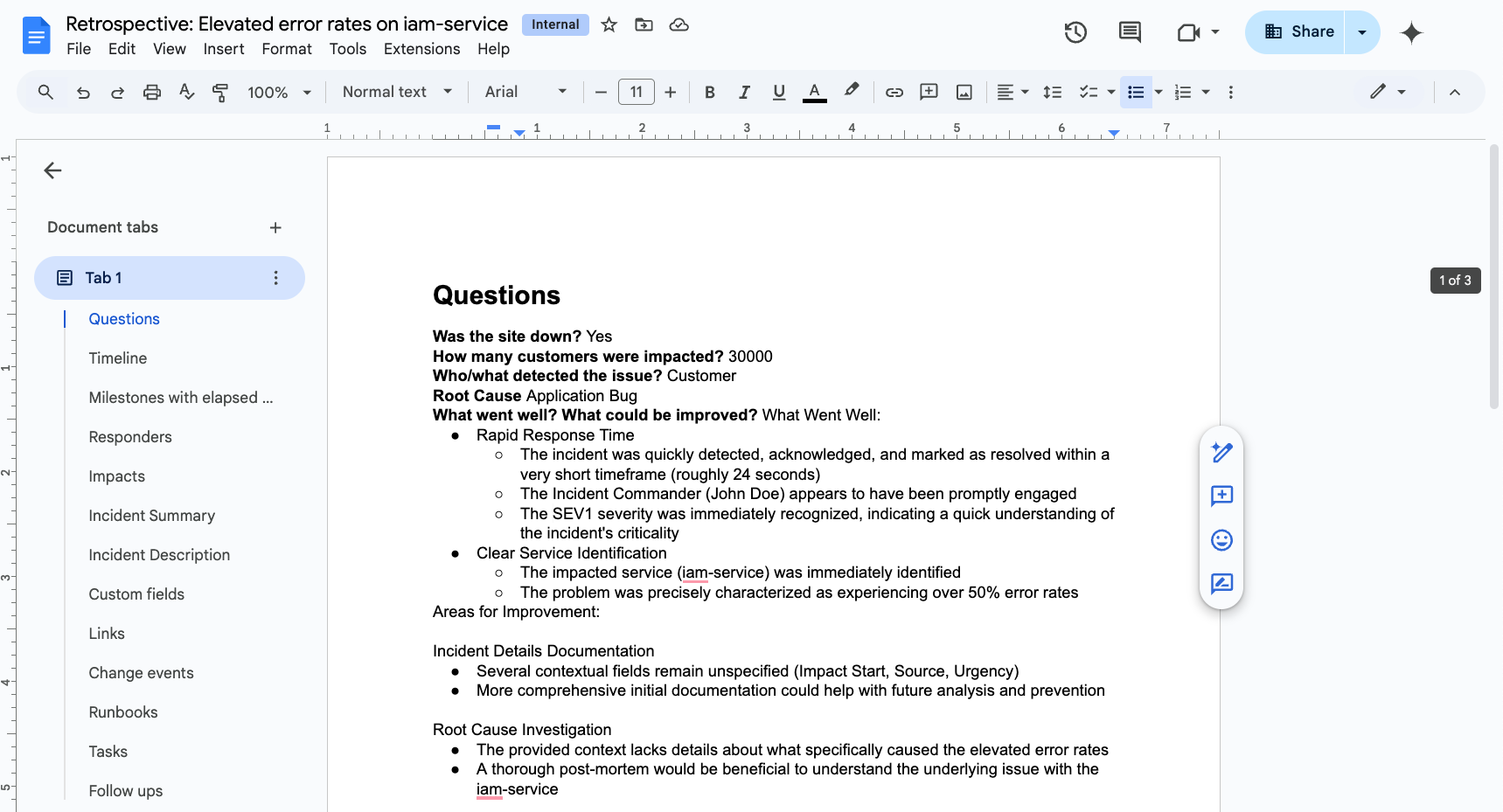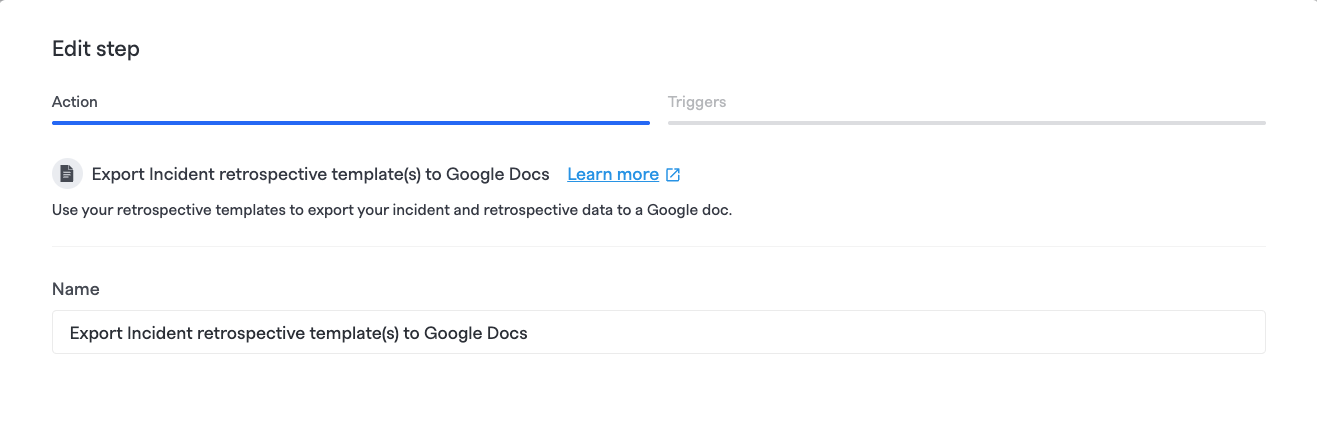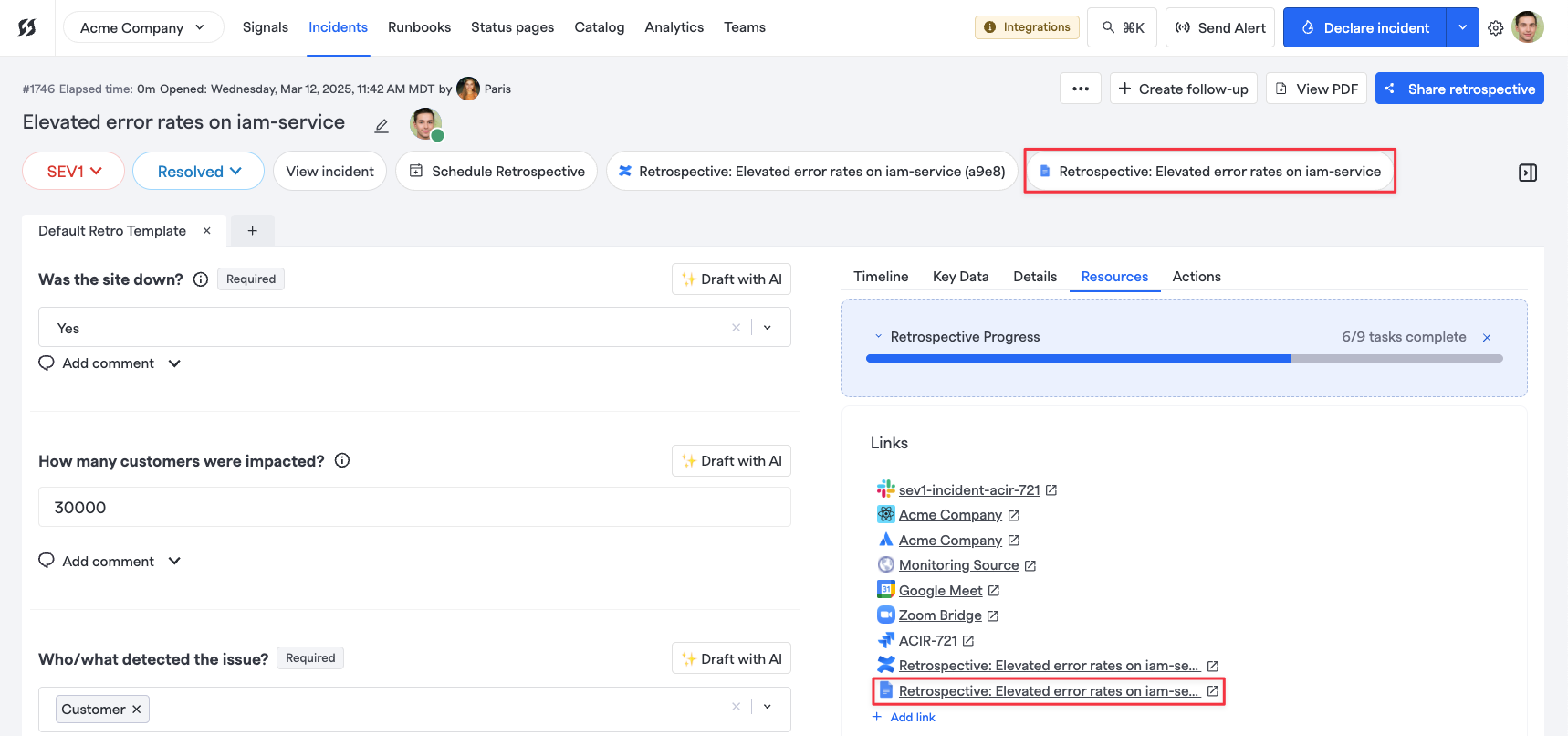Export Incident Retrospective Template(s) to Google Docs

Example Google Docs template export
Prerequisites
Configure your Google Docs integration if you haven't already.
Configuration

Export incident retrospective template(s) to Google Docs step
This step is different than the Export Retrospective to Google Docs step, which enables configuring and fully customizing the template or data exported to Google Docs. Instead, this step exports your configured Retrospective Templates.
On the Conditions & scheduling tab, ensure settings are configured per your requirements. The default configuration is "When current Milestone == Retrospective Completed."
Note:If using in a Private Incident or private runbook, you must uncheck "Execute Automatically." For security and safety reasons, FireHydrant does not allow these retrospective steps to execute automatically for Private incidents, and you must set the step to execute manually.
Runbook Execution
Upon completion of Retrospective, the export step may take a few minutes to execute. Once the export is complete, a link to the exported document will be attached to the incident like so:

Google Doc export link included on the incident's data
Exported retrospectives are stored in a folder named FireHydrant Retrospectives at the Google Drive root of the user who authorized the integration.
The document will export with edit permissions for the organization by default.
Note:This step will only be able to execute once, even if included in multiple Runbooks. Subsequent executions after the first will fail.
Updated 2 months ago
